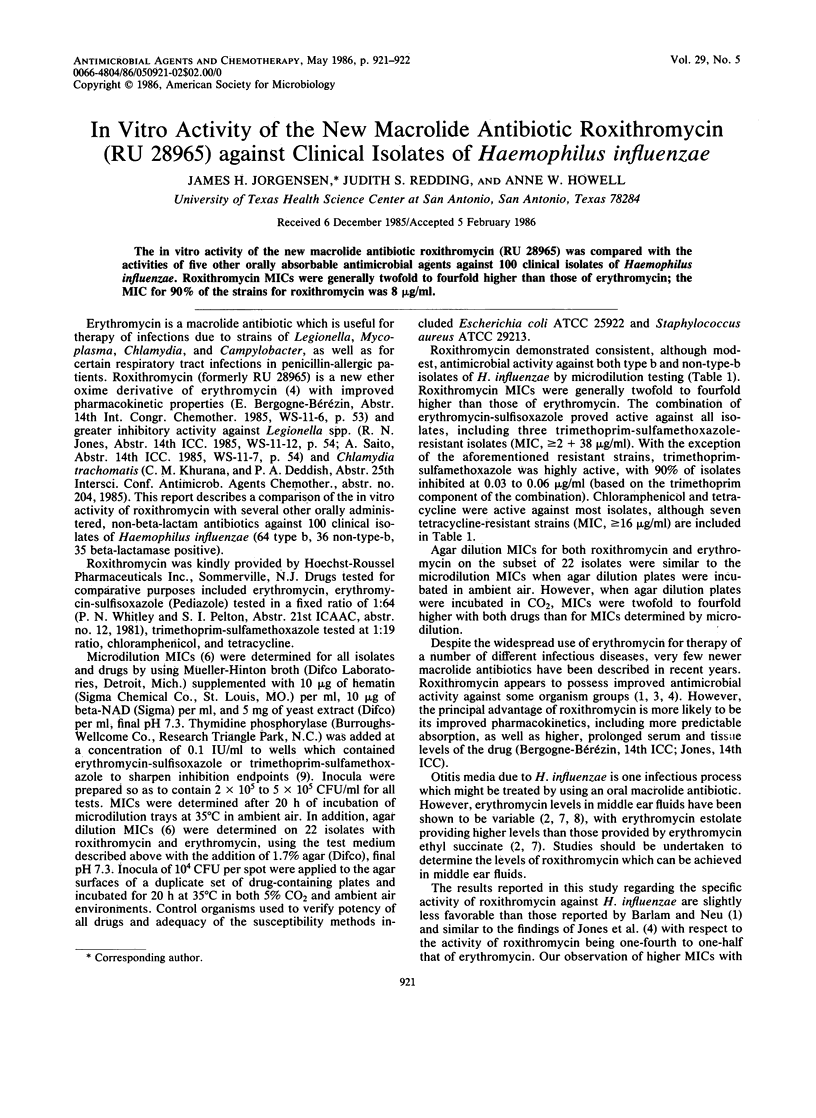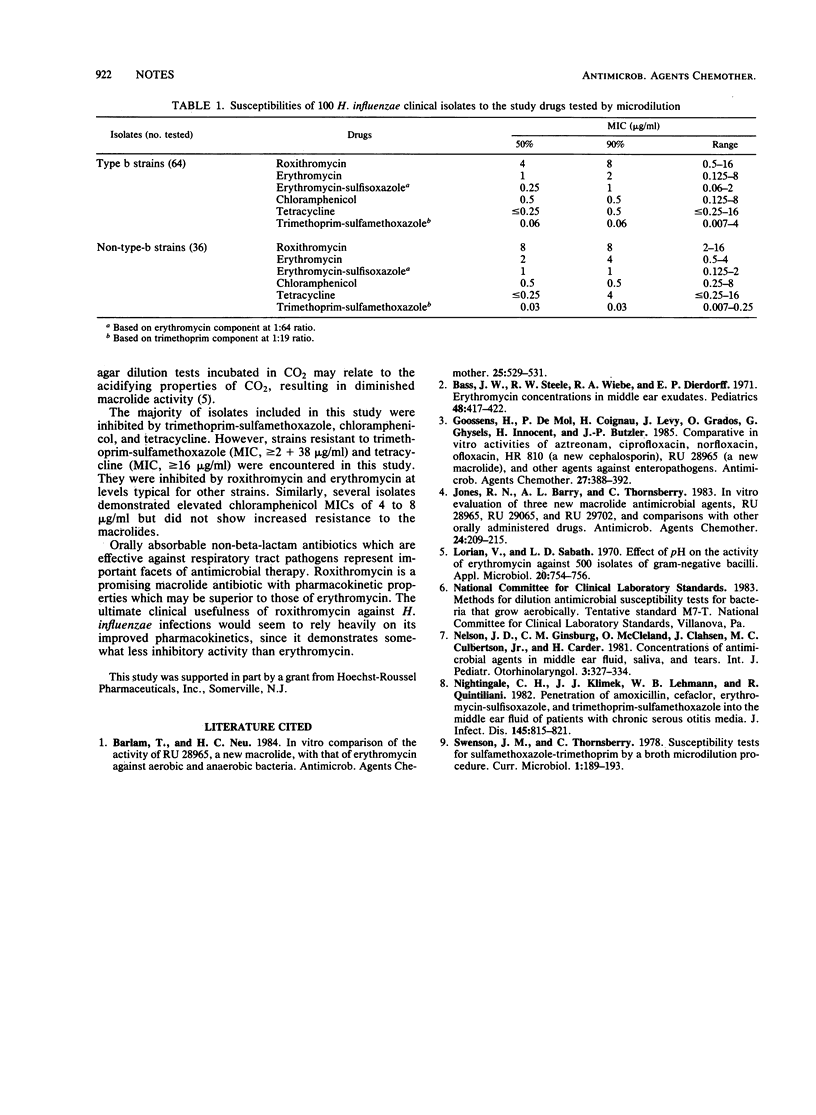Abstract
The in vitro activity of the new macrolide antibiotic roxithromycin (RU 28965) was compared with the activities of five other orally absorbable antimicrobial agents against 100 clinical isolates of Haemophilus influenzae. Roxithromycin MICs were generally twofold to fourfold higher than those of erythromycin; the MIC for 90% of the strains for roxithromycin was 8 micrograms/ml.
Full text
PDF

Selected References
These references are in PubMed. This may not be the complete list of references from this article.
- Barlam T., Neu H. C. In vitro comparison of the activity of RU 28965, a new macrolide, with that of erythromycin against aerobic and anaerobic bacteria. Antimicrob Agents Chemother. 1984 Apr;25(4):529–531. doi: 10.1128/aac.25.4.529. [DOI] [PMC free article] [PubMed] [Google Scholar]
- Bass J. W., Steele R. W., Wiebe R. A., Dierdorff E. P. Erythromycin concentrations in middle ear exudates. Pediatrics. 1971 Sep;48(3):417–422. [PubMed] [Google Scholar]
- Goossens H., De Mol P., Coignau H., Levy J., Grados O., Ghysels G., Innocent H., Butzler J. P. Comparative in vitro activities of aztreonam, ciprofloxacin, norfloxacin, ofloxacin, HR 810 (a new cephalosporin), RU28965 (a new macrolide), and other agents against enteropathogens. Antimicrob Agents Chemother. 1985 Mar;27(3):388–392. doi: 10.1128/aac.27.3.388. [DOI] [PMC free article] [PubMed] [Google Scholar]
- Jones R. N., Barry A. L., Thornsberry C. In vitro evaluation of three new macrolide antimicrobial agents, RU28965, RU29065, and RU29702, and comparisons with other orally administered drugs. Antimicrob Agents Chemother. 1983 Aug;24(2):209–215. doi: 10.1128/aac.24.2.209. [DOI] [PMC free article] [PubMed] [Google Scholar]
- Krause P. J., Owens N. J., Nightingale C. H., Klimek J. J., Lehmann W. B., Quintiliani R. Penetration of amoxicillin, cefaclor, erythromycin-sulfisoxazole, and trimethoprim-sulfamethoxazole into the middle ear fluid of patients with chronic serous otitis media. J Infect Dis. 1982 Jun;145(6):815–821. doi: 10.1093/infdis/145.6.815. [DOI] [PubMed] [Google Scholar]
- Lorian V., Sabath L. D. Effect of pH on the activity of erythromycin against 500 isolates of gram-negative bacilli. Appl Microbiol. 1970 Nov;20(5):754–756. doi: 10.1128/am.20.5.754-756.1970. [DOI] [PMC free article] [PubMed] [Google Scholar]
- Nelson J. D., Ginsburg C. M., Mcleland O., Clahsen J., Culbertson M. C., Jr, Carder H. Concentrations of antimicrobial agents in middle ear fluid, saliva and tears. Int J Pediatr Otorhinolaryngol. 1981 Dec;3(4):327–334. doi: 10.1016/0165-5876(81)90057-4. [DOI] [PubMed] [Google Scholar]


